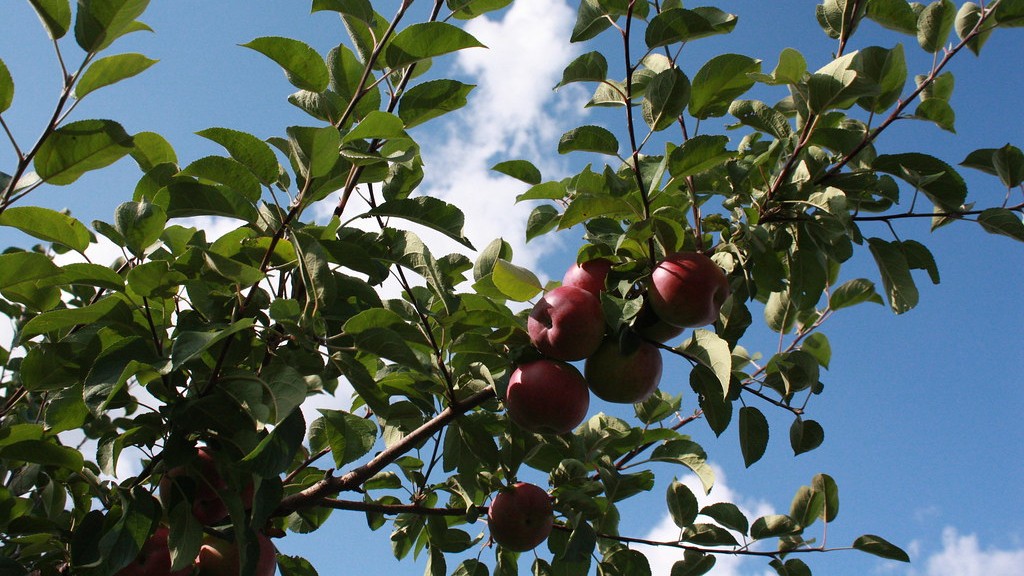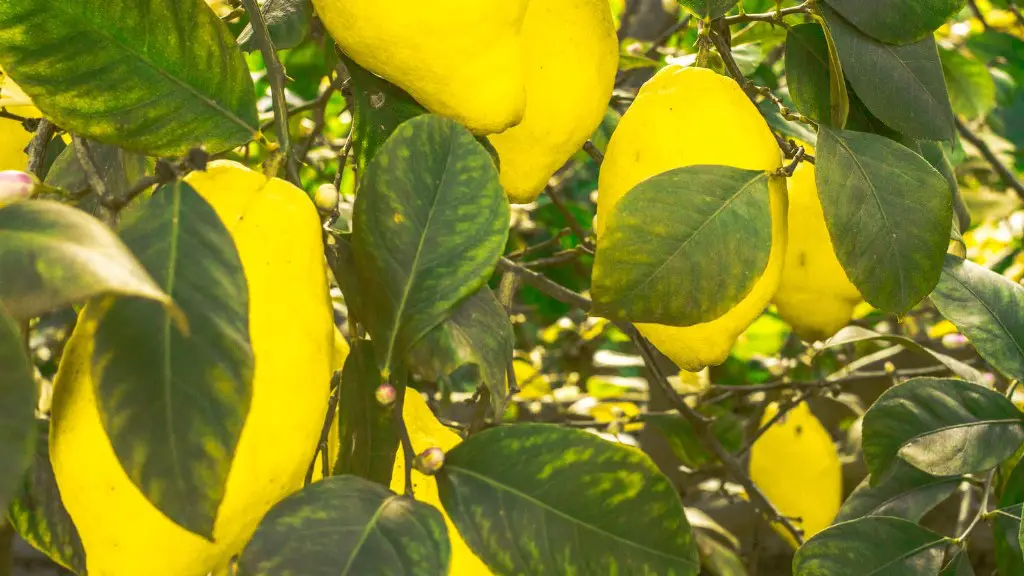The Structure of a Palm Tree
The palm tree is an impressive and mighty type of tree that can reach heights of up to 45 metres in some cases. They have tall trunks and arching stems with fronds curving in a similar way to an umbrella. Despite looking like they’re too delicate to withstand strong winds and heavy gusts, they’re actually incredibly resilient plants.
At their base, palm trees have a stout root system that helps to hold the tree in place, even during the most turbulent of storms. Further up, their trunks and stems become more slender so they can bend in the wind and avoid breaking. Finally, at the top of the tree are their fronds which curve away from the trunk and act against the wind like an umbrella, transforming the force of the wind and decreasing its effect.
Most palm trees can withstand winds of up to 106 km/h without getting toppled, although times vary from species to species. For example, the Florida Thatch palm can withstand up to 148 km/h and typhoons without getting uprooted, whereas the more sensitive Bismarck palm can only withstand winds up to 43 km/h.
Overall, if the palm tree is planted in an area with strong winds, it’s best to plant a species that is known to withstand higher wind speeds. In some cases, it’s even possible to install storm anchors at the base of the tree to ensure it doesn’t get uprooted.
The Foliage of a Palm Tree
The foliage of a palm tree is another way to measure its strength and resilience. Palm fronds are tougher than most trees, as they’re specifically designed to bend in the wind and help reduce the force of the wind on the tree. They’re also hardier when it comes to drought; unlike other trees, they can store water in their fronds, enabling them to survive in extreme conditions.
The incredible ability of the palm to withstand different climates and conditions is one of the reasons why it’s so popular in home gardens and landscaping. Despite the often harsh weather conditions they’re exposed to, they’re still capable of bearing fruit, with nevergreen leaves that can stay healthy and green even in the direst of conditions.
When it comes to the foliage of a palm tree, there are also several different species to choose from, each boasting its own unique characteristics. Some species are evergreen, meaning their fronds won’t turn yellow and eventually die, whereas other species are semi-evergreen and will eventually shed their fronds. It’s important to understand the different species and select one that’s best-suited to the location it’s going to be planted in.
The Resilience of a Palm Tree
Overall, the palm tree is an incredibly resilient species of tree and can withstand intense wind speeds and dry conditions. Its slender trunks and arching stems help it bend in the wind and resist powerful gusts, while its long foliage can store water and endure the severity of a storm.
Experts agree that the palm is one of the strongest species of tree in existence and can easily survive in a range of different climates. Of course, suitable care and maintenance is important in order to ensure it remains healthy, but with this in place, it’s one of the most durable and long-lasting trees.
For anyone looking to add a long-lasting and resilient feature to their property, the palm tree should be at the top of the list. With its humble yet imposing structure and its ability to withstand the worst of weather conditions, it’s easy to see why the palm tree is a popular choice for those looking for something that’s strong, reliable and hardy.
The Lifespan of a Palm Tree
Palm trees have a long lifespan, with some species living up to 75 years and even longer in some cases. The average lifespan of a palm tree depends on the species of palm and its climate, but in general terms, it’s fair to say that most species can easily reach 35 – 50 years, if not more.
The climate also has an effect on how long the palm tree can thrive. If it’s planted in a warm climate, it has a greater chance of living a longer life, whereas in colder climates, the lifespan may be shorter. Water is an important factor too; sufficient water is needed in order to keep the tree healthy and ensure it lives a full life.
At the same time, it’s important to consider the maintenance of the tree. Regular pruning and fertilising can help the tree stay healthy and attain maximum longevity. In some cases, this can increase its lifespan by as much as 20 %, meaning that with the right care, a palm tree could even reach 100 years or more.
The Maintenance of a Palm Tree
In order to keep a palm tree healthy and prevent it from succumbing to disease or pests, regular maintenance is important. This includes regular watering, fertilising, pruning, and protection from pests and diseases by using deterrent methods.
Fertilising a palm tree is important in order to keep it healthy and ensure it absorbs the nutrients it needs from the soil. fertilisers also help promote the growth of new leaves, which means the tree can continue growing in size and reach its maximum potential height.
Pruning is important for removing dead or diseased leaves and helping the tree to maintain its shape. This can also help to remove any branches that may be rubbing against each other and causing damage. Pruning should be done by a professional, as cutting the wrong section of the tree can damage it and reduce its strength.
For protection against pests and diseases, pest and disease control sprays and liquid treatments can be used. These protect the tree from destructive insects and fungi, while also boosting its overall health, resulting in a stronger and more robust tree.
The Versatility of a Palm Tree
The incredible strength and durability of the palm tree also makes it a versatile feature for a range of different settings. With a variety of shapes and sizes available, it’s easy to find a suitable species for any residential or commercial environment. It can even be used as a shade tree, protecting outdoor seating areas and backyards from the hot sun.
Overall, the palm tree is a beautiful and versatile feature that can be used to enhance the look of any outdoor space. With its elegance and resilience, it’s a must-have for any garden or landscaping project, providing a strong and reliable feature that will stay standing for many years to come.
The Benefits of a Palm Tree
Having a palm tree on your property brings many benefits; not only do they look good and add a touch of elegance to a space, but they also provide necessary shade from the sun. As mentioned before, they’re especially useful for providing protection against hot weather, making them ideal for residential backyards, restaurants and other outdoor seating areas.
Palm trees are also great for purifying the air, as they take up more carbon dioxide than most trees and release more oxygen, resulting in better air quality throughout a space. This makes it an especially desirable feature for those looking to reduce air pollutants in their environment.
Finally, for those looking for a tree that requires little maintenance, the palm tree is definitely a good choice. Its hearty roots and strong stems mean it can survive in a range of different conditions, while its evergreen foliage means it doesn’t require regular pruning or trimming. In short, the palm tree is a low-maintenance, long-lasting feature that can be enjoyed in its full glory for many years to come.
The Economic Impact of a Palm Tree
In addition to its aesthetic and environmental benefits, the palm tree also has a major economic impact. For example, in some parts of the world, palm trees are grown for the production of palm oil, which has become an important part of many industries. This means that palm trees are often associated with economic growth, as they help to create jobs and stimulate local economies.
Furthermore, palm trees are also a valuable source of medicine. Several compounds extracted from palm tree leaves are used to treat a range of conditions, from skin rashes to diabetes. This means that the palm tree is a valuable source of medicine for many countries, particularly those in tropical climates.
Overall, the palm tree is a valuable economic asset and its presence can have a major impact on a region’s economy. Whether it’s providing jobs in palm oil production, providing medicine or simply enhancing the beauty of the space, its economic value should never be underestimated.
Conclusion
The palm tree is an incredibly strong and resilient species of tree that can live a long and healthy life with the right care and maintenance. Not only is it a visually appealing feature, but it also has a substantial economic value and provides a number of health and environmental benefits. Furthermore, it’s a versatile feature that can be used in a variety of different settings, making it an ideal choice for anyone looking for a strong and reliable tree.




